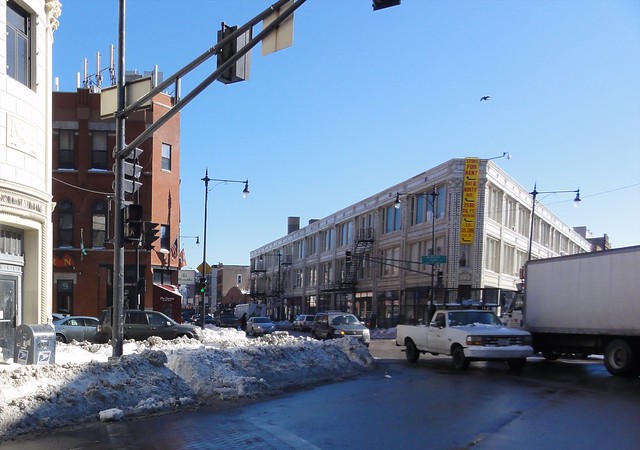Are you familiar with “sneckdowns”? These are neckdowns created when drivers carve patterns in snow or slush.
Sneckdowns illustrate what part of the roadway motorists actually use, as opposed to the amount of room city planners may think they need. As such sneckdowns show how excess pavement could be repurposed to create safety infrastructure for pedestrians and cyclists and calm motorized traffic, or even new public space. Think curb extensions (aka bump-outs), pedestrian islands, protected bike lanes, seating plazas and more.

The concept goes back quite a ways. In 2001, New York’s Transportation Alternatives advocacy group wrote: “[T]he next time someone tells you that you can’t have a neckdown on that corner or this corner because there’s not enough room, show them what happens every year when it snows.” Streetfilms’ Clarence Eckerson Jr. documented “naturally occurring neckdowns” in 2006, and Streetsblog founding editor Aaron Naparstek coined the hashtag in 2013, launching the international sneckdown craze.
Snow can also tell us interesting things about pedestrian and cyclist behavior. For example, this tweet from Madison, Wisconsin, shows us that pedestrian-activated walk signals buttons, aka “beg buttons,” aren’t as popular with real humans as traffic engineers might assume. I’d put that under the sneckdown phenomenon as well.
Now that we’ve gotten our first real snowfall of the year, Streetsblog Chicago is launching a #ChicagoSneckdown competition to draw attention to places that are ripe for road diets, plus other useful info about transportation patterns that snowfall can tell us. Post your photos of sneckdowns on social media all winter long using the hashtag #ChicagoSneckdown and tag Streetsblog Chicago. Also feel free to include the usual #sneckdown hashtag so people from other cities can check them out too. We’ll award cool prizes (to be determined) for photos of the best sneckdown examples at our March reader meet-up. Happy sneckdown hunting!





